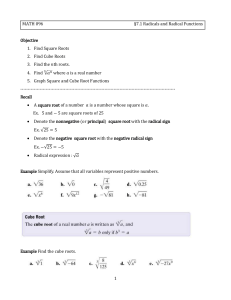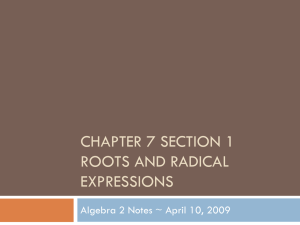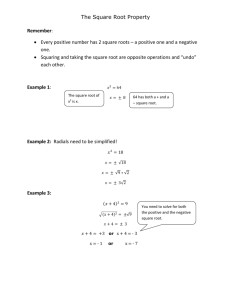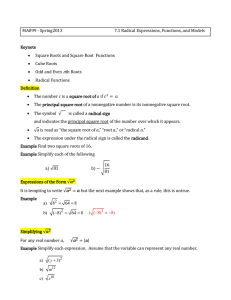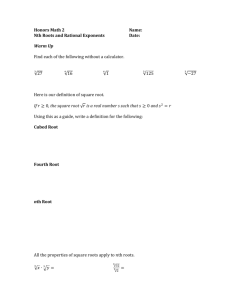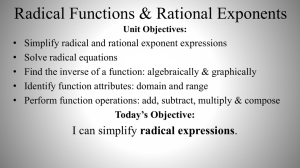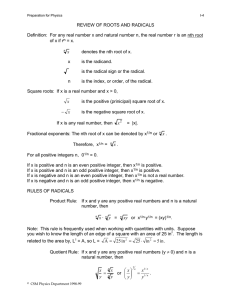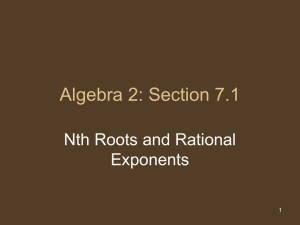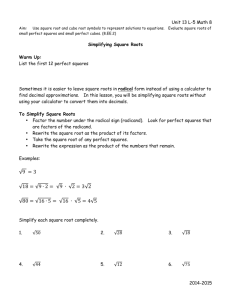File
advertisement
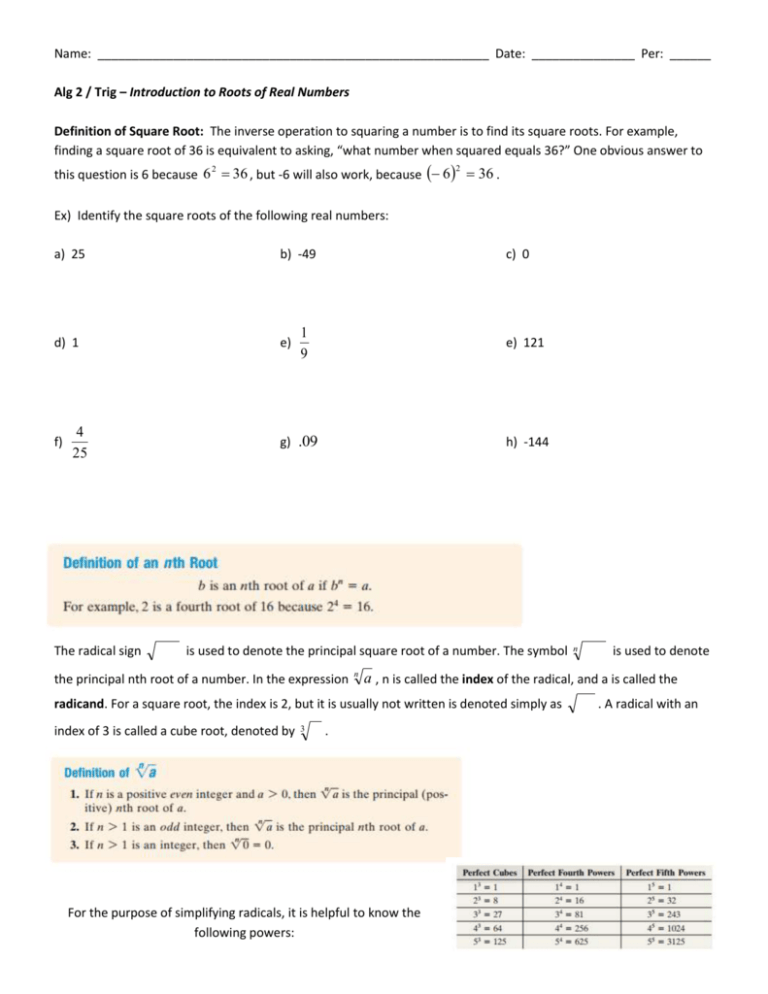
Name: _________________________________________________________ Date: _______________ Per: ______ Alg 2 / Trig – Introduction to Roots of Real Numbers Definition of Square Root: The inverse operation to squaring a number is to find its square roots. For example, finding a square root of 36 is equivalent to asking, “what number when squared equals 36?” One obvious answer to this question is 6 because 6 2 36 , but -6 will also work, because 6 36 . 2 Ex) Identify the square roots of the following real numbers: a) 25 b) -49 d) 1 e) f) 4 25 The radical sign c) 0 1 9 e) 121 g) .09 h) -144 is used to denote the principal square root of a number. The symbol the principal nth root of a number. In the expression n 3 is used to denote a , n is called the index of the radical, and a is called the radicand. For a square root, the index is 2, but it is usually not written is denoted simply as index of 3 is called a cube root, denoted by n . For the purpose of simplifying radicals, it is helpful to know the following powers: . A radical with an Complete the statements before you begin the exercises: 4 81 is ______ because 4 81 is ______ because 3 27 is ______ because 3 27 is ______ because 4 81 3 27 3 27 Ex) Simplify the expressions by identifying the principal root without a calculator, or state those that do not represent a real number. Just like “squaring” and taking the square root ‘undo’ each other, so do taking the nth root and raising to the nth power. Carefully read the following definition: Consider the example: 3 2 3 8 2 versus the example: 4 2 4 16 2 as a rationale for the need for the absolute value of a when n is a positive even integer. Use this concept/definition to simplify the following: 3 6 4 52 6 50 6 3 923 a6 3 u v3 4 x y 4
